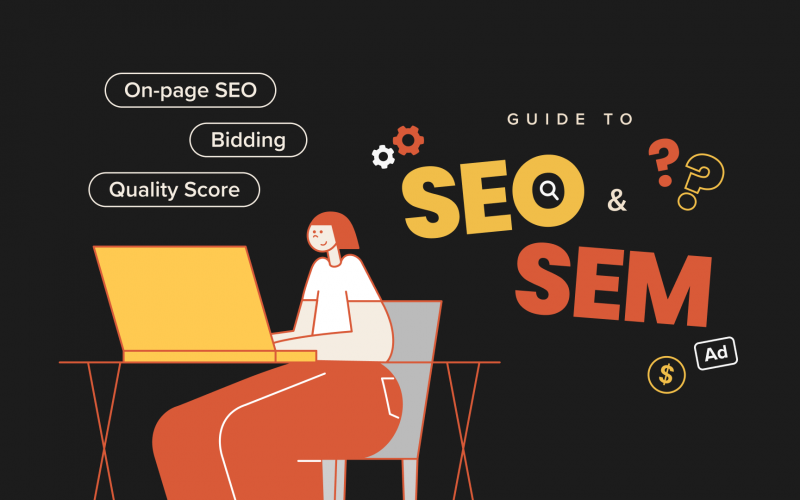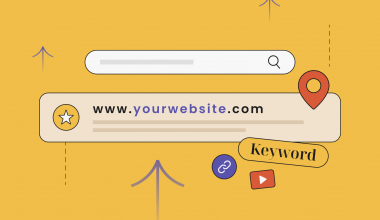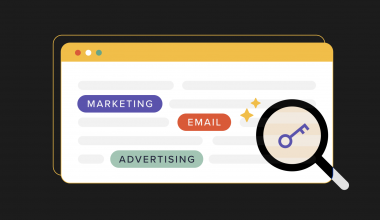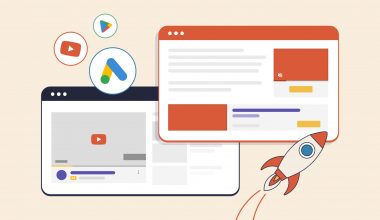SEO and SEM were an important part of the digital marketing strategy decades ago, even before the sudden rise of social media marketing. Truth be told, search engines have always been the tool we go for when we want to know, search or buy something. Compared to social media where we often scroll around mindlessly, our actions on search engines have more purpose and stronger buying intentions. That’s why incorporating SEO and SEM in your digital marketing strategy is extremely important in this age and time.
In this article, we will break down the complicated parts of SEO and SEM so that it can be an easy-to-digest guide for beginners.
What is SEO & SEM?

Let’s make this simple! Did you know that the search results on search engines like Google could be differentiated into two distinctive parts?
The first is organic search results, whose ranking is determined by your Search Engine Optimization (SEO) capabilities. And the other ones that appear on the top of the pages with the little label “Ad” are called Pay-per-clicks (PPC), which is a kind of paid advertisement.

Search Engine Marketing (SEM), on the other hand, is a big term that includes SEO and PPC. Though, many refer to SEM as PPC as well.
Overview of SEO
SEO is a practice that aims to rank your website organically on the search results page without the need to pay for advertisement. It can be done in 4 steps that involve On-page SEO, Off-page SEO, Technical SEO and User Experience & Interaction.
On-page SEO
As the name suggests, On-Page SEO happens on the pages of your website itself. This step is about optimizing the keywords on your website by including them in your content, title tags, meta descriptions and webpage URL. So, the most important thing to do in this step is to do keyword research and analyse the relevant keyword. It is crucial to know all your target keywords as your website’s content, as well as descriptions, will be surrounding the main keywords.

Off-page SEO
This happens outside of your website, where the goal is to get more quality backlinks to point back to your website. The purpose of doing Off-page SEO is to gain trust and authority from other websites. You may think of backlinks as votes, as Google generally uses them as signals to measure your website’s ranking. Some other off-page signals also include your website’s Expertise, Authoritativeness, and Trustworthiness (EAT) as well as social media sharing.
Technical SEO
Now, Technical SEO refers to the backend development and maintenance of your website. This includes sitemap organization, webpage loading speed, website security and maintenance. You should undergo Technical SEO to have your website’s wireframing and site architecture set up correctly so that search engine bots can crawl and index your website easily.
User Experience & Interaction
The way users interact with your website also tells Google whether your website is useful and relevant. If you have a high bounce rate(meaning users exit your website in a short period of time after they enter without moving over to your other web pages), it could give a signal that your website is not relevant and not answering users’ queries. Hence, user experience and interaction are also important to achieving good SEO results. The critical thing to remember when designing a user experience is to make it enticing but simple so that users could have a smooth journey surfing around your website. The navigational links in between your website should make it easy for them to search around too.
Overview of SEM
As mentioned before, SEM is a broad term that includes all the digital strategies such as SEO and PPC. Since we refer to PPC as SEM, this part will be outlining the overview of PPC, a paid strategy to promote your website on search engines.
Bidding
Similar to an auction, the process of doing PPC ads also involves bidding on your targeted keywords. So, when users search for the keywords, your ads will show up on their result page. This not only works on Google Ads but also on Bing Ads. The ranking of the ads usually depends on the amount of your bid. If you bid higher, your ad will rank higher. And when users click on your ad, you will pay for it, which is why it is called Pay-per-click.

Quality Score
Quality Score is a metric that Google uses to measure and calculate how relevant your ad is to your specific keyword. It is typically based on your click-through rate, your website’s user experience and your Google account ad’s overall performance.
Ad Copy
Your Ad Copy plays an essential role in your SEM strategy. It is what entices users to click on your ad, which potentially increases your click-through rate (CTR). And when you have a high CTR, your Quality Score will naturally improve too.
Ads Group
Ads Group is your convenient one-stop place to gather all the data you need when creating ads. Some key terms you should know when managing your Ads Account are:
- Click: The action Internet users take to click on your ad.
- Click-through rate (CTR): The percentage of clicks on your ad.
- Conversion: The desired result after users click on your ad, usually is to make a purchase, book an appointment or make a phone call.
- Cost: The amount you need to pay for the clicks. Usually, you could control your budget limit.
- Cost per acquisition (CPA): The total cost spent divided by the number of conversions you get.
- Cost per click (CPC): The cost you pay for a click.
There you have it! A simple yet helpful guide for beginners to understand what SEO and SEM are. If you’re interested to learn more about these digital marketing strategies, head over to our other blogs.










